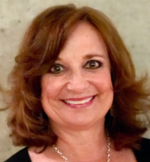Sega Girls Task Force
From Sega Retro

| ||
| Sega Girls Task Force Division of Sega of America | ||
|---|---|---|
| Founded: 1993[1] | ||
| Defunct: 1995 | ||
Headquarters:
|
The Sega Girls Task Force was an internal Sega of America video game production team[1] established to both address the issue of then-limited female participation in video gaming and research the viability of games developed with a female audience in mind. The team was directly involved with the production of three Western-developed Mega Drive games, and advised a number of third-party studios on issues of inclusion and accessibility.[2]
Contents
History
Inception
In 1993, Sega of America licensing executive Michealene Cristini Risley found herself as the head of the company's new Entertainment & Consumer Products division. As a former Marvel producer, she experienced first-hand the lacking female representation in children's and young people's media, and saw her position within Sega as a way to make meaningful change on this front. Shortly after being hired, Risley asked to attend a two-week program at Stanford on women and gender studies, something she describes as "a life-changing experience."[2]
Soon after returning to Sega of America, she began to assemble a group of like-minded executives which could be assembled into a proper research and development division. Eventually, the team would be joined by Managers of Product Marketing Pamela Kelly and Lydia Gable, Director of Licensing Cynthia Modders, Vice President of Marketing Diane Fornasier, and Executive Producer Cindy Hargrave, with noted support from both Tom Kalinske and Joe Miller.[2]
| “ | The only way I was going to get them to pay attention was to turn it into money, and so I presented it as like, ‘We’re leaving this huge market on the table. And if we don’t start creating content for girls, somebody else is going to. | „ |
One of the group's largest challenges was simply establishing how to proceed. Little research had been conducted on female inclusion in video games, and the Task Force had little prior knowledge to work from, having to create guidelines on how to research, implement, and market female-inclusive games virtually from scratch. Thankfully, the group's members all had considerable experience in the field of female marketing. Pamela Kelly, formerly a Mattel executive, recalls that company's previous ethnography research had revealed worrying results - that "even if a girl did start to play, when a boy walked in the room she’d have to give it up to the boy."[2]
The results of the group's research revealed many gender-based preferential differences for things like game genres, with Risley noting research showing young girls of the time preferred puzzle games to shoot-'em-ups.[2] After convincing her fellow management of the benefits of inclusive games, Sega of America set aside a small part of its software publishing budget for the development of three upcoming Mega Drive titles produced by the Task Force: Crystal's Pony Tale, Baby Boom, and Berenstain Bears' Camping Adventure.
Operation

In addition to directly producing three Mega Drive games, the Sega Girls Task Force also participated in the production of a number of other contemporary titles, both first and third-party. However, many development partners resisted efforts to make games appeal more to girls. Kelly recalls that many developers opted to increase a game's playability through difficulty, and she hoped to convince these developers that lowering a game's difficulty levels could make them more inclusive.[2] While the Task Force's suggestions were largely unimplemented by participating developers, a small number of studios did make the suggested changes. Kalinske specifically remembers noticing a worrying trend, in which he himself would present retailers and game companies with factual hard data on the moral and economic benefits of female-oriented games, only to have potential customers write off the idea entirely.
In one instance, Pamela Kelly eventually got through to David Perry of Virgin Games USA, with the end result being both a slight reduction in the final version of Aladdin's difficulty and a greater emphasis on more "accessible" lighthearted elements and humor. In spite of Perry's positive reception, Disney's producers were much colder, again providing resistance and attitude to the Task Force's efforts.[2]
At some point during its operation, Sega of Japan were introduced to the concept of the Sega Girls Task Force. Per Tom Kalinske, "they didn’t understand it at all. They didn’t buy into the idea. This was another crazy American deal, and ‘go ahead and do it, but we don’t really expect you to be successful with it." However, Sonic Team proved to be far more open to the idea, as Pamela Kelly remembers they were "receptive to ideas which might make games more accessible to non-traditional audiences."[2]
Results
The effects of the Sega Girls Task Force on the female-oriented game market are hard to come by, but measurements from Sega of America saw Genesis use by young girls increase from 3% in 1993 to 20% in 1995.[3] While this increase can also be attributed to the system's rise in popularity, team members recall seeing a general increase in girls' involvement with Sega products during this time, particularly in the feedback they received from female fans. Despite neither Risley and Kelly believing that Sega of America "ever got remotely close to solving the problem of girls in games", they regard their work with the Sega Girls Task Force as an important stepping stone in shifting public perception on what games are and who they're designed for.[2] Risley recalls receiving letters of thanks from girls who were excited to see female characters in Sega's video games. "They felt like they belonged. I think it made them feel like they could play."
While the project's acknowledgement of girls as a legitimate audience was a relative first for such a large game company, the Sega Girls Task Force received very little in the way of publicity or promotion, with the group's legacy more apparently in the later work of team members. Notably, Pamela Kelly would later be hired by Mattel, where she produced a number of critically-acclaimed and commercially-successful Barbie games for home computers.
| “ | I’ve heard from a number of people over the years about how our efforts helped introduce them to games and made video game playing acceptable for them. They’re grateful for it. It makes me feel good. | „ |
Softography
Mega Drive
- Disney's Aladdin (1993) (consulting)
- Crystal's Pony Tale (1994)
- Baby Boom (unreleased)
Game Gear
- Baby Boom (unreleased)
Mega-CD
- Baby Boom (unreleased)
List of staff
External links
- What happened when Sega courted female players in the mid-’90s article by Richard Moss at Polygon
References
- ↑ 1.0 1.1 https://archives.museumofplay.org/repositories/3/resources/254 (Wayback Machine: 2023-01-03 12:56)
- ↑ 2.00 2.01 2.02 2.03 2.04 2.05 2.06 2.07 2.08 2.09 2.10 https://www.polygon.com/features/2019/5/27/18526122/sega-girls-task-force-female-players (Wayback Machine: 2022-11-29 00:26)
- ↑ ref https://books.google.com.au/books?id=HSBJ-geXmNAC&pg=PA5&lpg=PA5&dq=%22girls+task+force%22+sega&source=bl&ots=gWwssV_qsv&sig=vaE1_E79YDCFfxWz-zqUgJg_SKw&hl=en&sa=X&ved=2ahUKEwiMmJ7_3dDeAhXBdN4KHYUhBG4Q6AEwAnoECAUQAQ#v=onepage&q=%22girls%20task%20force%22%20sega&f=false ref
| Timeline of Sega of America research and development divisions |
|---|
|
86
87
88
89
90
91
92
93
94
95
96
97
98
99
00
01
02
03
04
05
06
07
08
09
10
11
12
13
14
15
16
17
18
19
20
21
22
23
|
